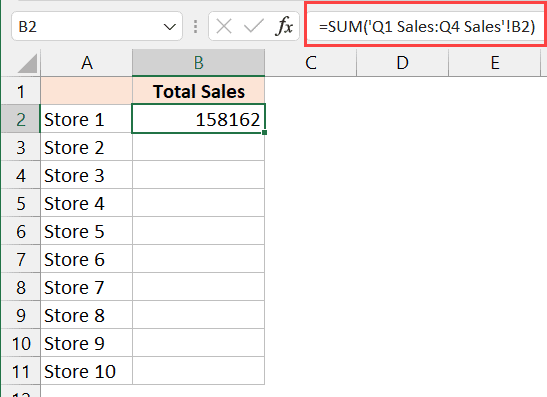5 Ways to Build Excel Equations Across Sheets

Working with Microsoft Excel often involves dealing with extensive datasets that are spread across multiple sheets. Mastering the art of creating equations that seamlessly integrate data from various sheets can significantly enhance your efficiency and analytical capabilities. This detailed guide will explore five effective strategies for building Excel equations across sheets, ensuring you can manage and analyze complex data with ease.
1. Using Cell References

The simplest and most direct method to reference data from another sheet in your equation is by using cell references. Here’s how you can do it:
- Identify the Sheet Name: Begin by typing an equal (=) sign, followed by the name of the sheet you want to reference, an exclamation mark (!), and then the cell you need.
- Example Syntax: If you're in Sheet2 and want to use cell A1 from Sheet1, the formula would look like =Sheet1!A1.
📝 Note: Make sure to use the exact sheet names, including spaces and apostrophes if any.
2. 3D References for Summarizing Data

When dealing with identically structured sheets, 3D references can help in aggregating data across these sheets:
- Create a Summary Sheet: Have one sheet designated for the summary of data from other sheets.
- Use the SUM Function: With 3D references, you can sum values from the same cell across multiple sheets. The formula would look like =SUM(Sheet1:Sheet3!A1).
3. VLOOKUP Across Sheets

The VLOOKUP function is invaluable when you need to look up data in a table organized vertically:
- Set Up Your Data: Ensure your lookup value is in one sheet, and the corresponding data to be fetched is in another.
- VLOOKUP Syntax: The formula will be =VLOOKUP(lookup_value, SheetName!Range, column_index_number, [range_lookup]).
- Example: If you're looking up an ID from Sheet1 into Sheet2, you might write: =VLOOKUP(A2, Sheet2!$A$2:$C$100, 2, FALSE).
📊 Note: VLOOKUP assumes data is sorted when using TRUE for the last parameter, otherwise use FALSE for exact matches.
4. INDEX and MATCH Functions

Combining INDEX and MATCH provides a more flexible alternative to VLOOKUP, especially for data in any arrangement:
- Match Function: First, use MATCH to find the row or column number of your lookup value.
- Index Function: Then, use INDEX to retrieve the corresponding value from that position.
- Example: If you need to find the sales of a specific product from Sheet3, you could write: =INDEX(Sheet3!$B$2:$D$10, MATCH("Product X", Sheet3!$A$2:$A$10, 0), 2).
5. Using Named Ranges

Named ranges make your formulas easier to read and maintain, particularly when linking multiple sheets:
- Define a Named Range: In Formulas tab > Define Name, give a meaningful name to a cell or range.
- Reference in Formulas: Use this name in your formulas without specifying the sheet name explicitly.
- Example: If you name cell A1 on Sheet1 as "TotalSales", you can simply write =TotalSales + Sheet2!B1.
In Summary

Building Excel equations across sheets not only streamlines your data management tasks but also enhances your analytical prowess. We’ve explored methods from simple cell references, summarizing data with 3D references, to advanced lookup functions like VLOOKUP, INDEX with MATCH, and the convenience of named ranges. These techniques enable you to harness the full potential of Excel, making data integration across sheets intuitive and effective.
What if I change the name of a sheet referenced in a formula?

+
If the sheet name changes, Excel will display #REF! errors in your formulas. Update the sheet name manually or update the formula to reflect the new name.
Can I use VLOOKUP to fetch data from multiple sheets?

+
You can combine VLOOKUP with IF statements or INDIRECT function to dynamically pull data from different sheets, but it requires complex formulas.
Is there a way to automatically update formulas when I insert new sheets?

+
Excel does not update formulas automatically when you add new sheets, but you can use the INDIRECT function to build flexible references.
Why use named ranges when I can use cell references?

+
Named ranges improve formula readability, facilitate formula updates, and allow for easy referencing across sheets without needing to remember cell coordinates.



